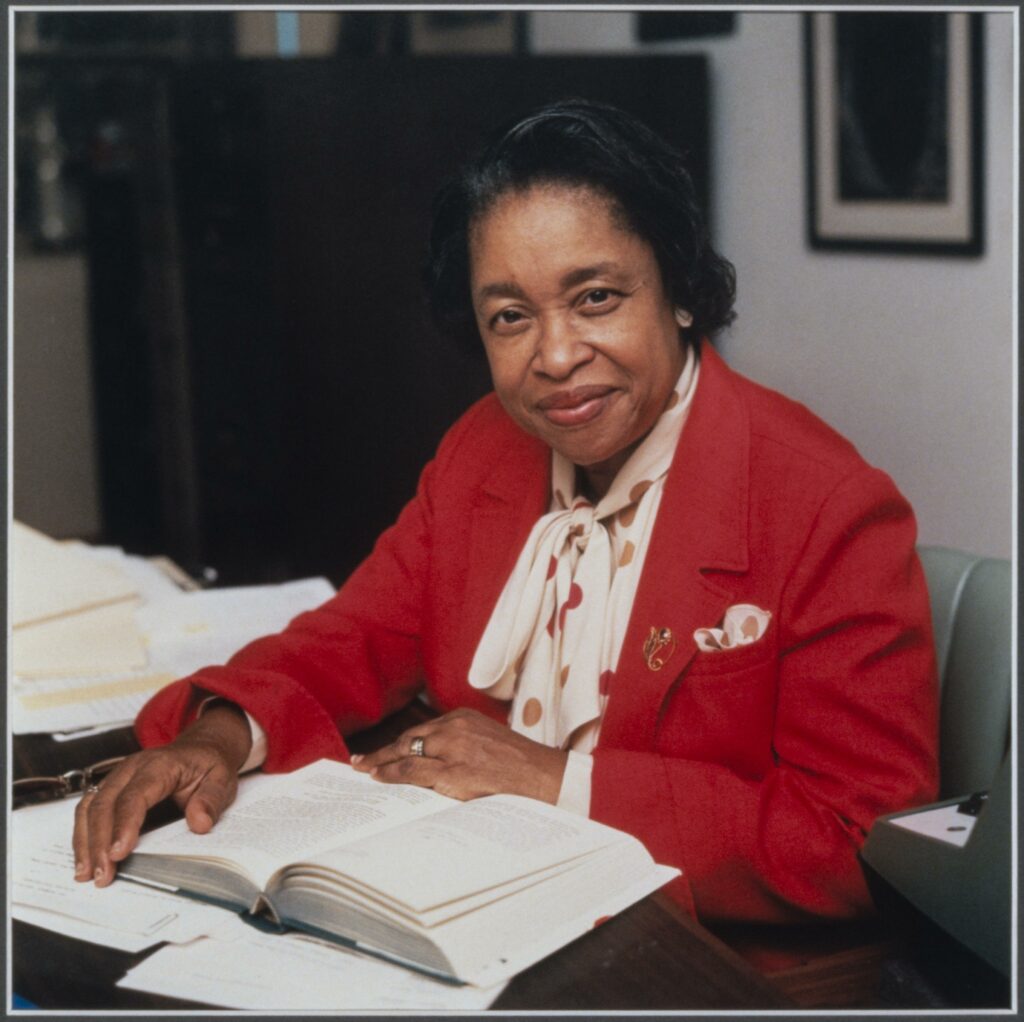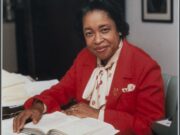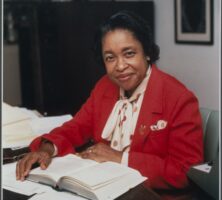Margaret Walker’s novel Jubilee, published in 1966, is one of the first novels to present the nineteenth-century African American historical experience in the South from a Black and female point of view.
The winner of Houghton Mifflin’s Literary Fellowship Award, the novel is a fictionalized account of the life of Walker’s great-grandmother, Margaret Duggans Ware Brown, who was born enslaved in Dawson in Terrell County and lived through Reconstruction in southwest Georgia. It is based on stories told to Walker by her maternal grandmother. Walker herself was not a Georgian by birth. Born in Alabama, she spent most of her teaching career in Mississippi and earned her doctorate at the University of Iowa, where she wrote most of Jubilee, which served as her dissertation.
Walker also learned much about the life of her great-grandfather, a free man from birth. While on a speaking engagement in nearby Albany in 1947, Walker visited Dawson, where she found a man who had known her great-grandfather Randall Ware, who worked as a blacksmith and operated a gristmill, which she was able to visit. Walker based the description of the Dutton plantation, where most of her story is set, on an antebellum house that she discovered while visiting Bainbridge.
Walker’s narrative is divided equally into sections on the antebellum era, the Civil War (1861-65), and Reconstruction. Each section contains eighteen to twenty-two chapters. Despite the lengthy narrative passages and the demands on the reader imposed by the various dialects, Jubilee moves its heroine, Vyry, from the slave cabin to the “Big House,” and from slavery to freedom.
Jubilee draws on both history and folk traditions. The treatment of enslaved people is based on numerous slave narratives Walker researched in archives and libraries in Georgia, North Carolina, and the National Archives. The Civil War section of Jubilee traces the battles, historically, from Tennessee to Sherman’s march through Georgia. The African American male characters Randall Ware and Brother Zeke, who are both literate, function in dual roles as spies for the Union army and foot soldiers in the Confederate army. As the Union soldiers storm and destroy the plantations, including the Dutton place, Vyry’s role changes from that of bondsperson to primary protector of the property and caretaker of her former enslaver’s daughter and two grandchildren.
The book’s final section begins with the war’s end. It does not bring immediate freedom for Vyry. In addition to her caretaking duties, she, along with a “contraband” freedman named Innis Brown, must work the crops, as she anxiously awaits word from Randall Ware, her husband. When she receives news that Ware is dead, her heart will not allow her to believe it. Innis Brown, however, expresses interest in Vyry; befriends her children, “Minna” and Jim; and asks Vyry to marry him. His hard work and his dream of owning his home and farm persuade her to do so. They leave the Dutton plantation and move to Alabama. After several temporary homes, including one burned by the Ku Klux Klan, Vyry and her family settle in Greenville, Alabama. The building of the new house is a community effort. Vyry’s midwifery and the marketing of her vegetables establish a bond between African Americans and whites in the community. The house-building celebration concludes with quilting bees, plenty of food, and the solidarity of the “neighborhood watch.”

With a home and a farm in place, Randall Ware, who survived the Civil War after all, fulfills Vyry’s dream of schooling for her children. After seven years of military duty, work in his smithy and gristmill in Dawson, and service as a charter member of the Georgia Equal Rights Association, Ware traces Vyry and her family to Greenville. He knows of her marriage to Innis Brown, but his mission is to take his son, Jim, to a training school in Selma, Alabama. The final section of Jubilee thus shifts its focus to Black education during and after Reconstruction.
The ending of Jubilee suggests a connection between the events the novel has described during Reconstruction and the civil rights movement of the 1960s. The narrative ends on a train bound for Selma. As Jim and his father board the train, the conductor announces the segregated seating order—African Americans up front and whites in the rear.






